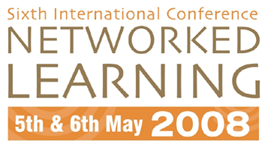

Reciprocity, generativity and transformation in communications using multiple digital tools
Sue Timmis, Marie Joubert Gibbs, Anne Manuel, Sally Barnes
University of Bristol, sue.timmis@bristol.ac.uk, m.gibbs@bristol.ac.uk,
anne.manuel@bristol.ac.uk, sally.barnes@bristol.ac.uk
Abstract
This paper explores the use of multiple tools for technology mediated communication, drawing on two recent empirical studies in which students and researchers in UK Higher Education worked on collaborative activities. Digital communication is integral to the personal lives of most young people who are or will become university students. Most students now use multiple digital tools and communication devices habitually (Borrenson Caruso & Salaway, 2007). Similarly, higher education researchers also engage in multiple forms of communication (Nentwich, 2003), and for both these groups, choices and decisions need to be made over how, when and where to communicate and interact with others.
Socio-cultural theory, underpins the two projects and communications are understood to be dialogic and reciprocal (Bakhtin 1999). Furthermore, communication can be characterised as transmissive, ritualised or transformative (Pea, 1994) depending on its impact on other participants. Crucially, he suggests that ‘generativity’ or evolution of ‘ways of knowing’ comes about through transformative communication, where participants are mutually transformed by the process of communication and each participant offers resources for transforming the practice and meaning making of others.
The first project (e-SIG Communications) focuses on online communications amongst a group of third year campus-based undergraduates in the UK, undertaking a 12 week module in e-Business. The students worked online in special interest groups (e-SIGs) and collaborated to produce a research study. Groups were encouraged to use a variety of communication tools including instant messaging, mobile phones, blogs and discussion groups on the university virtual learning environment (VLE). A wide variety of digital tools especially instant messaging, were habitually used by the students and the choice of tools was found to relate to friendship groups, home context, access and economic factors rather than the task.
The second project (Trinity) was initiated under the umbrella of MiMeG, an ESRC funded e-Social Science project using software specifically designed for distributed, synchronous, collaborative analysis of video data. Trinity was set up to analyse the way the researchers used the multiple communication and research tools during the project. The findings suggest that there is a relationship between the formality of the tool chosen and the level of commitment in sharing emerging ideas. The choice of tools and the ways in which they were used was influenced by the researchers' relationship and by the efforts put into developing protocols for working together.
The quality of the communications and their contributions to collaborative working and knowledge construction are then considered. A joint analysis of the conversations from both projects using Pea’s notions of transmission, ritual and transformative communication found that most students’ communications can be seen as transmissive or ritualistic. There were, however, examples of conversations offering mutual support and showing evidence of co-construction of knowledge, especially using instant messaging tools. The researchers' conversations were more often transformative, showing strong evidence of co-construction of ideas. The researchers used these tools consistently and for specific purposes, whereas the students chose tools based on friendship groups, lifestyles, economic and access factors. Collaborations in the eSIGs were often hindered by a lack of commitment to the group and task. Although the project was set as a collaborative activity, the students viewed it as a co-operative task, where co-operation supports every member of the team to attain their individual goals; collaboration is based on setting a common goal (Lewis, 1997).
The paper concludes that the researchers' conversations were more often transformative and they were quite deliberate in identifying the specific needs of the task. The students, however, chose tools based on friendship groups and lifestyles rather than their appropriateness for the task in hand. Their conversations were more often transmissive within the e-SIGS and ritualistic with existing friends. The researchers matched the tool to the task, whereas the students might be thought to have matched the tool to the group and that this “task” in itself contributes to the transformation of the two groups in different ways.
| About NLC |
2008 Conference Papers
| Conference Committee| Keynote
Speakers
| Papers from previous NL conferences |Research Seminars| Current Conference
| Sponsors | Contact
|
